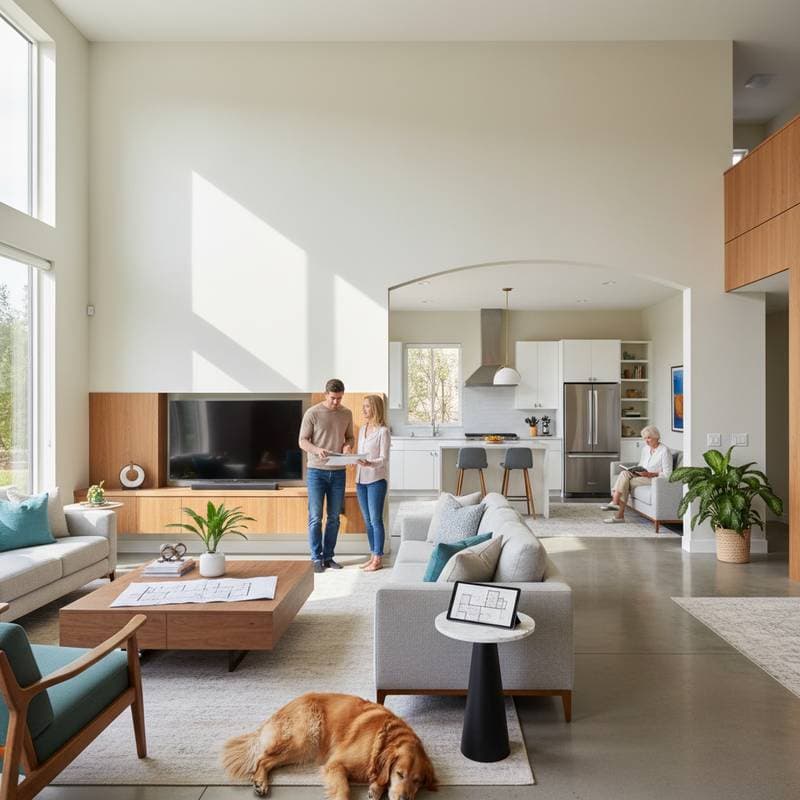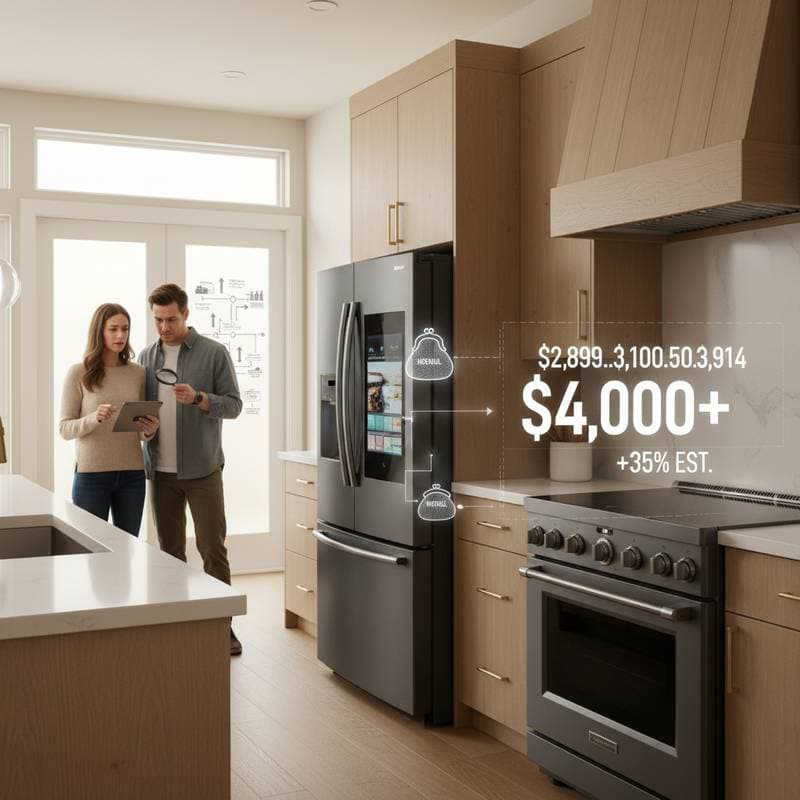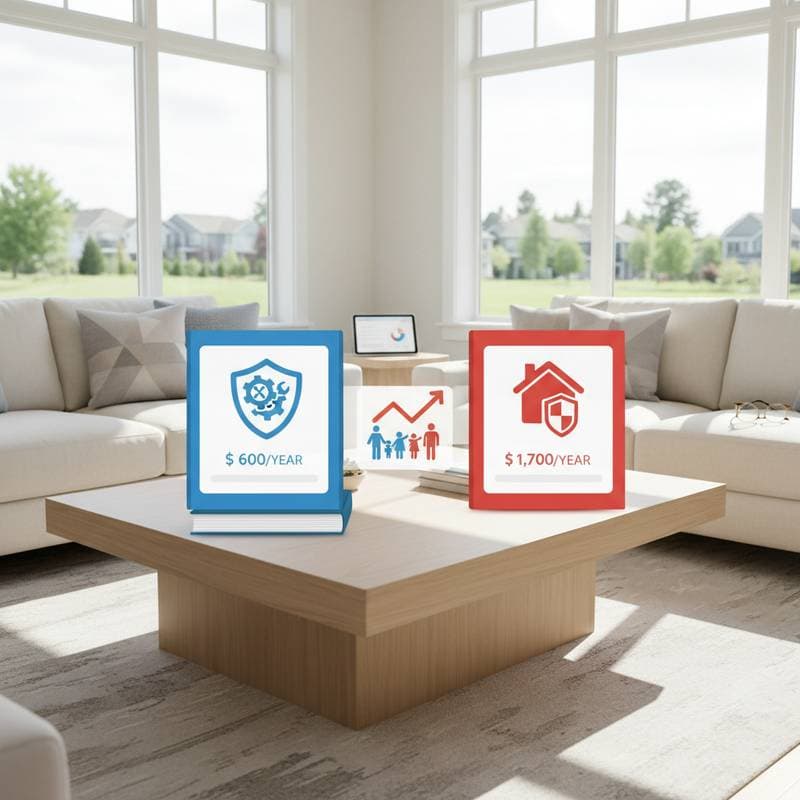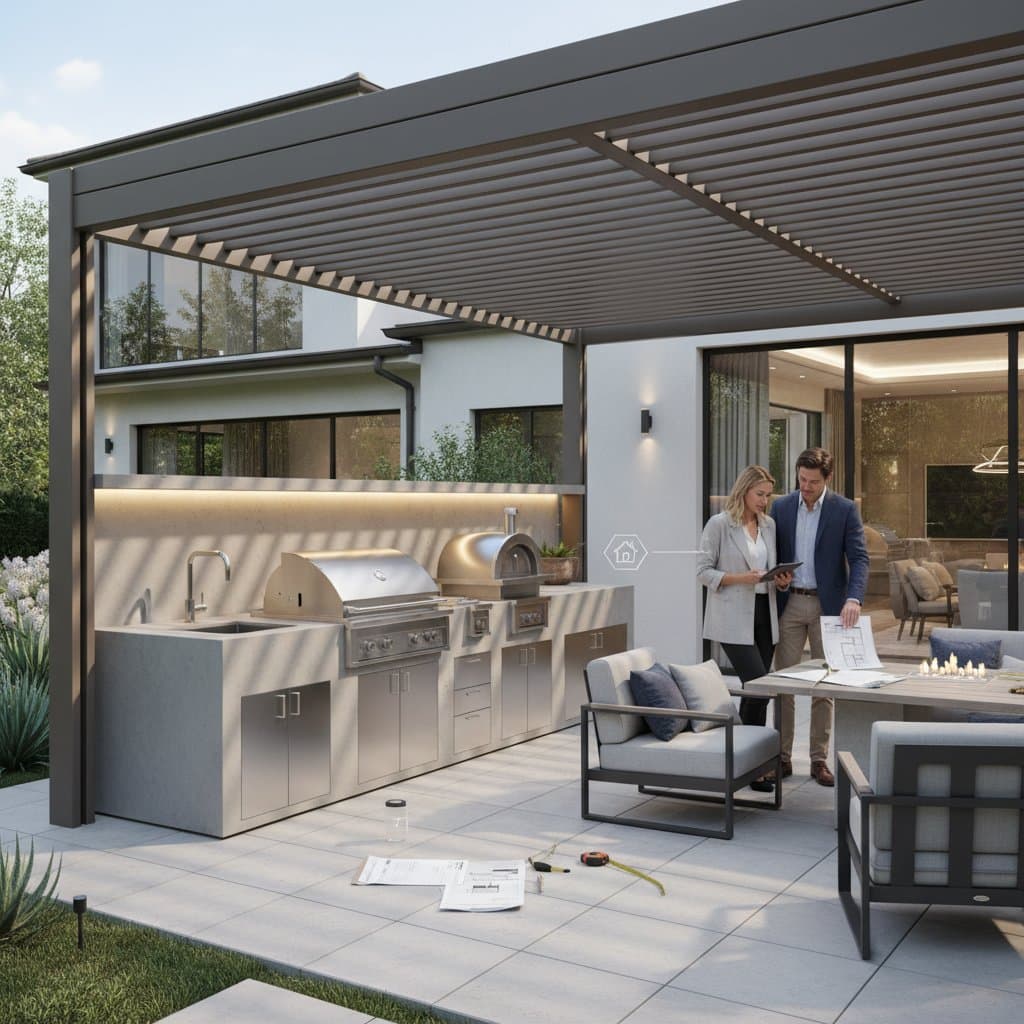Smart Budgets for Multi-Generational Home Designs in 2025
Summary Box
National average cost: $185,000 for a full multi-generational remodel
Typical range: $90,000 to $310,000
Low end and high end: $50,000 for basic retrofit to $600,000 for full addition or new build
Time to complete: 3 to 9 months depending on scope
DIY or Pro: Professionals handle structural, plumbing, and electrical work. Limited DIY options exist for finishes and interior fit-out.
ROI or resale impact: 65% to 85% depending on local demand and layout flexibility
Cost Factors
Scope and Size
Partial conversions, such as adding a bedroom suite with a small kitchenette, remain under $100,000. Full-scale detached accessory dwelling units or two-story additions often exceed $250,000. Homeowners benefit from assessing their specific needs early to align scope with budget constraints.
Material Grade and Finish
Laminate flooring, stock cabinets, and fiberglass showers reduce total costs by 15% to 25%. Custom cabinetry, tile flooring, and solid-surface counters enhance longevity yet elevate expenses. Select materials that balance durability with affordability based on family usage patterns.
Site Conditions and Accessibility
Flat lots with straightforward utility access save thousands in labor and excavation. Challenging features like tight side yards, hillside foundations, or extended trenching for sewer or electrical lines add $10,000 to $30,000. Conduct a site survey before finalizing plans to identify potential hurdles.
Labor Market and Season
Peak building seasons increase labor rates by 10% to 20%. Scheduling during slower periods yields better pricing and reduced wait times from tradespeople. Factor in regional hiring trends when setting timelines.
Custom Work and Change Orders
Additional doors, windows, or unplanned layout adjustments drive up costs significantly. Finalize designs and product selections at the outset to minimize rework. Document all agreements in writing to prevent surprises.
Strategies to Save Effectively
Practical Substitutions
- Install prefinished engineered flooring rather than site-finished hardwood to lower installation time and costs.
- Select quartz-look solid surfaces in place of natural stone for comparable aesthetics at reduced expense.
- Install a single shared laundry area instead of duplicate appliance sets to streamline utilities and space.
Preparation Steps to Minimize Labor Hours
Thorough preparation maintains crew efficiency. Remove debris, mark utility lines, and stage materials prior to trade arrival. Request that contractors coordinate inspections in batches to avoid unnecessary downtime.
Timing and Project Batching
Complete design and permitting during winter months, then commence construction in spring. Combine exterior work with roof or siding repairs to share equipment and mobilization expenses. This approach optimizes resource use across multiple tasks.
Essential Questions for Quotes
Compare bids from at least three contractors. Inquire about the following:
- Does the quote specify every room, finish, name, and area?
- Are materials detailed by brand or grade?
- Does the bid include cleanup and debris removal?
- Are permits and inspection fees itemized?
- How do payments align with project milestones?
- What warranty or service period applies?
Timeline and Scheduling Essentials
Material Lead Times
Cabinetry requires 4 to 10 weeks for delivery. Countertops take 2 to 3 weeks following measurements. Custom windows and doors demand 6 to 12 weeks, while HVAC equipment arrives in 2 to 5 weeks based on the model.
On-Site Crew Durations
Framing occupies 1 to 2 weeks. Plumbing and electrical rough-in span 1 to 3 weeks. Drywall and finishing cover 2 to 4 weeks, followed by 1 to 2 weeks for flooring and trim. Allocate 1 week for punch list items and final inspections.
Key Inspection Points
- Foundation or footing verification.
- Rough plumbing and electrical review.
- Insulation and energy compliance check.
- Final occupancy approval.
Maintain a shared schedule with the contractor. Even minor coordination issues lead to substantial delays.
Maintenance and Long-Term Care
Routine Upkeep
Replace HVAC filters every three months to ensure efficient operation. Inspect bathroom caulking and fan functionality annually. Examine exterior joints and flashing for signs of leaks. Lubricate door hardware and secure loose handles regularly.
Identifying Common Issues
Slow drains indicate potential clogs in shared lines. Inconsistent room temperatures signal undersized HVAC systems. Cracked grout or peeling paint suggests moisture intrusion.
Repair Versus Replacement Decisions
Refresh finishes on flooring or cabinetry if the structure remains sound. Replace mechanical systems after 15 to 20 years or upon noticeable increases in energy expenses. Proactive monitoring extends the remodels lifespan and preserves value.
Regional Considerations
High-Cost Metropolitan Areas
Coastal and urban locations with stringent zoning elevate design and permit expenses by 20% to 40%. Anticipate extended approval processes and steeper utility connection fees. Consult local regulations during initial planning.
Cold or Rural Environments
Enhanced insulation and frost-resistant foundations increase upfront costs but enhance comfort. Rural properties often benefit from lower labor rates, though material delivery may incur additional charges.
Hot or Humid Climates
Oversized HVAC systems and dehumidification features add $2,000 to $5,000. These upgrades safeguard finishes and elevate indoor air quality. Prioritize ventilation in design to mitigate humidity effects.
Designing for Multi-Generational Success
Multi-generational homes thrive when privacy, safety, and adaptability integrate seamlessly. Begin by cataloging daily requirements for each household member. Position sleeping areas and bathrooms separately, while linking shared spaces like kitchens or patios via wide openings or pocket doors.
Incorporate at least one accessible bathroom featuring a curbless shower and 36-inch doorways if space permits. Install lever handles instead of knobs and add blocking for future grab bars. These modifications incur minimal extra cost yet boost the homes versatility for aging residents.
Address noise reduction from the planning stage. Equip bedrooms with solid-core doors and sound-insulated walls. Apply resilient underlayment beneath flooring to accommodate varying household schedules.
Prioritize layered lighting for safety and ambiance, including overhead, task, and low-level options. Integrate dimmers and motion sensors to promote energy efficiency. In communal kitchens, duplicate essentials such as microwaves and coffee makers. Add a secondary sink or undercounter refrigerator to alleviate peak-time bottlenecks.
For accessory dwelling units, determine utility metering early. Separate meters facilitate future rental options but raise initial investments. This decision influences long-term flexibility and financial returns.
Maximizing Long-Term Value
Investing in a multi-generational remodel creates enduring family spaces that evolve with needs. By focusing on durable materials, efficient layouts, and proactive maintenance, homeowners secure comfort and equity growth. This strategic approach not only meets immediate demands but also enhances resale appeal in dynamic housing markets.



